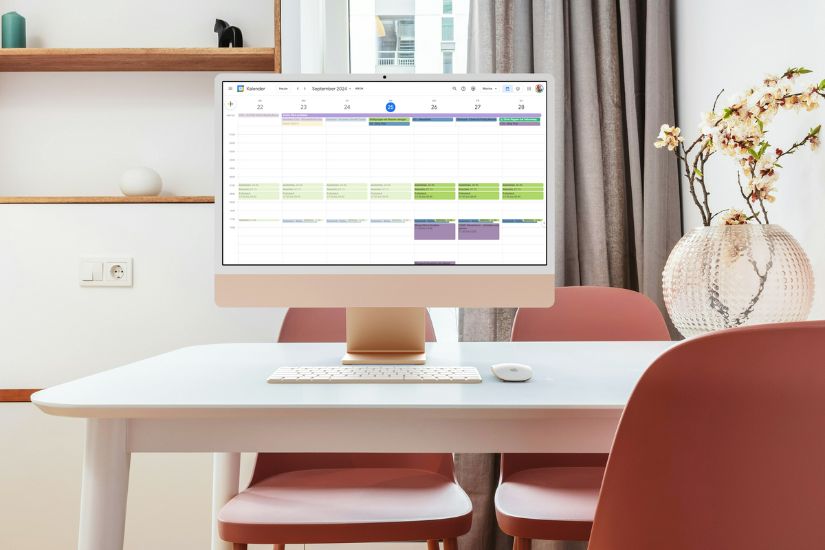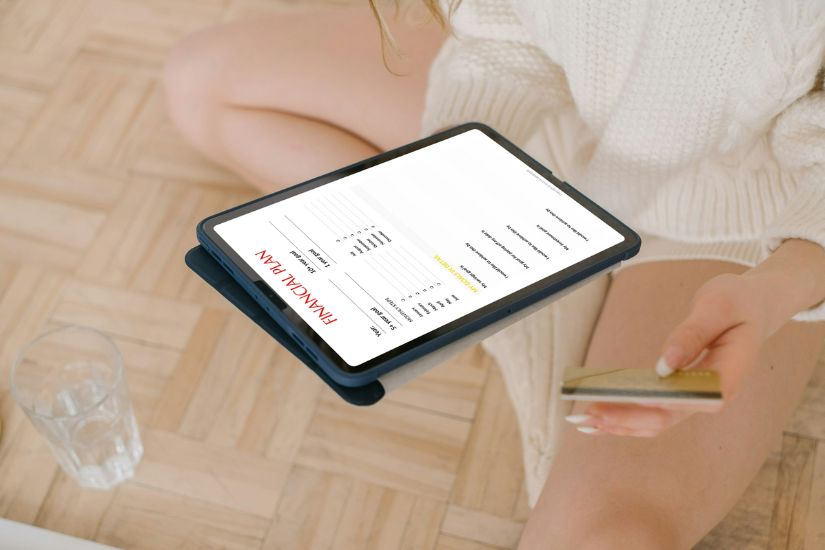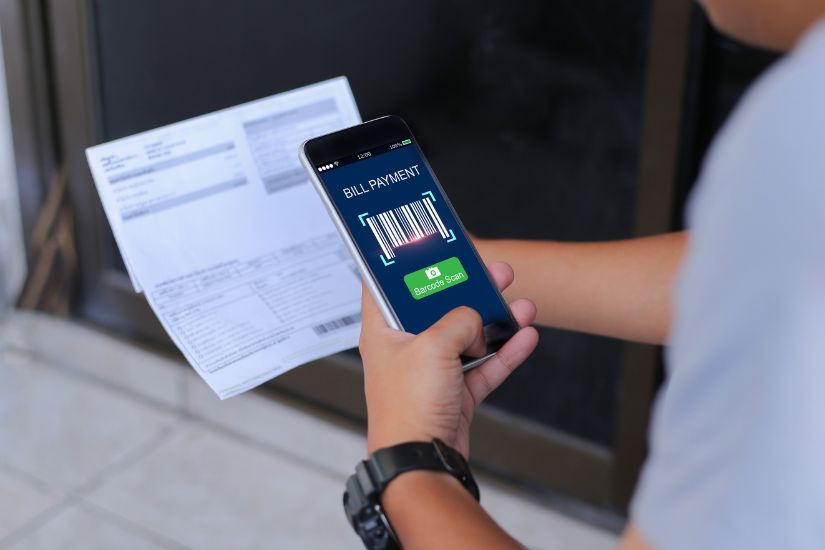This post may contain affiliate links. Please read my disclaimer for more information.
Unlock the Power of Blogging!
Ready to expand your reach and solidify your online presence? This free 5-day course will guide you step-by-step to create a clean, beautiful blog that amplifies your voice.
Let’s face it, managing your money can be stressful and time-consuming. But what if I told you there’s a way to make it all easier? Automating your finances can help you save more, stress less, and stay on track with your financial goals—all with a hands-off approach.
I’m a big fan of automating my finances. With so many tools available, it’s hard to imagine not having my finances set up to run automatically. Of course, I still stay on top of what’s happening with our money, but there’s no need to remember when every bill is due.
When you’re dealing with financial challenges like debt or a limited income, managing your finances should be a top priority. But that doesn’t mean you need to spend endless time on it.
The easiest way to stay on track? Automating your finances.
Let me show you how you can set up automatic payments for your bills, savings, and investments in just a few simple steps. I’ll also break down how the right tools can make all the difference.
The Importance of Automating Your Finances
Let’s start with a simple truth: Automation is key to simplifying your financial life.
Why? Because when things are automated, you won’t forget to pay a bill, transfer money to your savings, or invest.
It’s a stress-free way to stay on top of things while building your wealth in the background.

To be honest, we all have a lot going on with work, family, and managing our households, so it’s easy for finances to slip through the cracks. But neglecting your finances isn’t the best way to achieve stability and prosperity.
By automating your finances, you eliminate the excuse of not having enough time and ensure you stay on track toward your financial goals while making sure that every dollar has a purpose.
You’ll never have to worry about missing a payment, paying late fees, or forgetting to save money for that big trip you’ve been dreaming of. The best part? You set it up once, and the work is done for you.
Take a few minutes today to set up automatic transfers into your savings or retirement accounts. This is one of the first steps toward becoming financially free and stress-free!
Benefits of Streamlining Finances
Imagine having your finances run smoothly in the background while you focus on living your life. That’s exactly what happens when you streamline and automate your finances.
Here are some major benefits:
- No more missed payments—automated bill payments mean you never forget.
- Consistent savings—set up automatic transfers to save without thinking.
- Reduced stress—fewer tasks to manage means more peace of mind.

When you automate your financial tasks, you’re also setting yourself up for long-term success. It’s one of the simplest and smartest ways to keep your finances in check while reducing mental clutter.
Another big reason I choose to automate my finances is that I don’t want to constantly worry about the small details. Instead, I can focus on building and growing my blog to generate more income.
If this is one of your goals too, you’ll likely appreciate the benefits of automating your finances even more.
Resource:
Financial accounts you can automate
You can automate a variety of financial accounts to make managing your money simpler and stress-free.
- Start with your checking and savings accounts by setting up automatic transfers to move a set amount into savings each month.
- You can also automate bill payments for utilities, rent, and credit cards to avoid late fees.
- If you’re investing, automate contributions to your retirement accounts like a 401(k) or IRA. Many platforms also allow you to automate investment portfolios through robo-advisors or regular stock purchases.
This way, you’re steadily growing your savings and investments without needing to lift a finger!
Automating Your Finances: Save Money and Stress Less
Assessing Your Financial Situation
Before you start automating your finances, it’s important to understand where you currently stand financially. Take a moment to review your accounts, bills, and expenses.
- What are your recurring payments?
- How much are you saving each month?
This will give you a clear picture of what needs to be automated and what can be improved.

Your starting point provides clarity about your financial situation and how you can use automation to improve it or take it to the next level. It’s also a great opportunity to review whether everything you’re paying for is still necessary.
Knowing exactly where your money is going each month is key to setting up an automation system that works for you.
Setting Financial Goals
Once you’ve reviewed your financial situation, it’s time to set some goals.
Don’t feel stressed when we talk about financial goals again—they are important to define! You want to know what you’re saving and investing for.
Understanding your goals makes it easier to determine how much you need to save, as you’ll have a clear idea of the costs involved. Plus, saving for a specific goal is often more motivating than simply telling yourself you want to save.
My husband and I save each year for our four-month trip to Thailand. If we hadn’t defined this goal, we would likely spend the money instead of saving it.
What do you want to achieve? Whether it’s paying off debt, saving for a vacation, or building an emergency fund, automating your finances can help you get there faster.

Make sure to set clear and realistic goals. This way, you’ll know how much to automate toward each savings goal every month.
Resources:
- Optimistic Financial Planning – An 8 Step Guide
- Calculate Your Net Worth: Simple Guide to Your Financial Status
The First Step To Automating Your Finance
The first step to automating your finances is setting up direct deposit with your employer. This ensures that your paycheck is automatically deposited into your bank account on a regular schedule. This will ultimately be the date you plan everything around.
After setting up direct deposit, you can easily automate bill payments, transfers to your savings and investment accounts, creating a seamless system that works without constant oversight.
This first step lays the groundwork for automating the rest of your financial life, from bill payments to growing your investments.
Choosing the Right Financial Tools and Apps
We live in a fantastic time with so many great tools available to us. So, it’s time to ditch the handwritten methods! There are so many great apps and tools out there that can make automating your finances a breeze. From budgeting apps like Goodbudget or You Need A Budget (YNAB) to investing platforms like Acorns, these tools help you stay organized and automated.
On top of these apps, online banking makes it easier than ever to automate your finances. I can’t remember the last time I stepped into a bank! My husband and I have been using online banking for nearly 20 years now.
Resource:

Pick the tools that work best for you and your financial goals. Don’t be afraid to test out a few different apps to see what’s easiest to use and helps you stay on track.
Automating Bill Payments and Recurring Expenses
Automating your bills is one of the easiest ways to start simplifying your finances.
The simplest option is to enroll directly in your service providers’ automatic payment systems, allowing them to automatically withdraw payments from your bank account on a specified date.
Many banks also allow you to set up automatic bill pay, so you never miss a payment. Just link your checking account and you’re good to go!

Set it and forget it! You’ll never have to worry about late fees again.
Remember to check your account monthly to ensure everything is running smoothly and that your automatic payments align with the date of your incoming paycheck.
My personal tip: I use the free Google Calendar as my bill calendar to set automatic reminders for all my bills and payments. It’s easy to set them up once and have them repeat automatically, so I never miss a due date.
Automating Savings and Investments
One of the smartest things you can do for your future is automate your savings and investments. Set up automatic transfers to move a portion of your paycheck directly into a savings account or investment portfolio.
You can even automate investing in the stock market by using apps that round up your purchases and invest the spare change. This makes investing easy and accessible for everyone, even beginners.
To take this approach to the next level, use the “Pay Yourself First” method. This simply means prioritizing your savings and investments by treating them like the first bill you pay each month—before anything else.
Resource:

Tracking and Analyzing Your Financial Progress
Once everything is set up, it’s important to track your progress. Use financial dashboards and reports to see where your money is going and how close you are to your goals.
Just like apps can help you automate your finances, you can also use them to track your progress. Most apps provide monthly summaries that make this easy.
Why not take advantage of all the great features they offer? That’s what they’re designed for!

Tracking will help you stay motivated and make any adjustments if needed. It’s always a good idea to review your automated finances every few months to ensure everything is still aligned with your goals.
FAQs About Automating Your Finances
Conclusion and Final Thoughts
Automating your finances is one of the easiest ways to take control of your money and reduce stress. By setting up automatic payments, savings, and investments, you can streamline your financial life and work toward your goals with minimal effort.
By automating your finances, you’ll not only save time but also start building wealth in a way that feels effortless. Let’s get started!
Save this post to your favorite Pinterest board for later👇.


